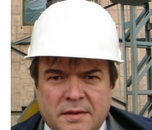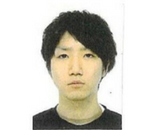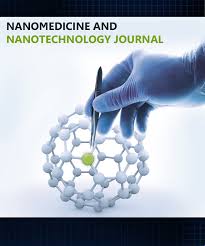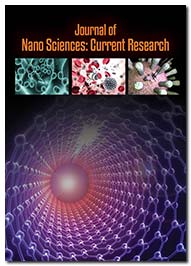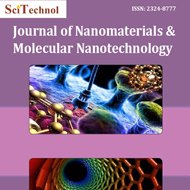Theme: Optimizing the demand of Nanomaterials with the help of recent Nanotechnologies
Nano Materials Congress 2019
About Conference
Conference Series LLC Ltd invites all the participants across the globe to attend 25th World Congress and Exhibition on Nanomaterials and Nanotechnology at Yokohama, Japan in the course of March 25-26, 2019.
Theme of the conference, “Optimizing the Demand of Nanomaterials with the Help of Recent Nanotechnologies” is designed in such a way to uncover the basic principles that lead to the drastic emergence and technologies in the field of Nano Materials and Nanotechnology. We hope Nanomaterials and Nanotechnology 2019 is the best platform to discuss the basic principles involved in the development of Nano materials and Nanotechnology. As this conference deals with the basics concepts, students, delegates, academicians and business people can attend the conference to root up the knowledge and excel in this field.
Conference Series LLC Ltd organizes a Conference Series of 3000+ Global Events with over 1000+ Conferences, 1000+ Symposiums and 1000+ Workshops in USA, Europe, Middle East & Asia pacific with support from 1000 more Scientific Societies and publishes 700+ Open access Journals which contains over 30000 eminent personalities, reputed scientists as editorial board members.
Market Report:
The global market for Aluminium systems and metal powder witnessed a rapid growth in 2013, and is projected to grow at a CAGR of 5.65% and 3.80% from 2015 to 2020, to reach USD 147.13 Billion and USD 4,062.2 Million by 2020 respectively. Asia-Pacific dominated the market with a share of 45% in 2014; this market is driven by increasing competition, consumer awareness, rising consumer spending, demand for value-added product, and technological advancements. The Asia-Pacific region is the fastest-growing market with the highest CAGR of 5.01% during the forecast period; this market is driven by increasing competition, consumer awareness, rising consumer spending, demand for powder metallurgy manufactured components, and technological advancements.
Target Audience:
- Nanomaterials Engineers
- Nanotechnology Engineers
- Researchers from Mining and Metallurgy Field
- Scientists and students from Tissue Science engineering and Biomaterials
- Delegates from Nano Materials and Nanotechnology Associations
- Professors, Students, Researchers and Technical Staff of Nano Materials and Nanotechnology Department
- Delegates from Nano materials, nanotechnology, Green technology, Atomic structure, Polymer, Fuel Cell, Biomaterials, Mining & Metallurgy, Nano Energy related.
Track 1: Nanotechnology in Materials Science
Materials science is important for the development of technology and has been or thousands of years. Different materials have different strengths and weaknesses and are used for different purposes. Materials Science and Engineering is the study of all materials, from those we see and use every day such as a glass or a piece of sport equipment to those used in aerospace and medicine, through that understanding how materials work, can create new materials for new applications as well as develop existing materials to improve performance. They can control the structure of a material, from an atomic level up.
Related Societies: American Electroplaters and Surface Finishers Society; Adhesive and Sealant Council; Chinese Society for Composite Materials (CSCM); Institute of Minerals and Materials Technology (IMMT); South East Asia Iron and Steel Institute (SEAISI); International Union of Materials Research Society; Federation of Materials Societies; US - Minerals, Metals & Materials Society; American Society US - Minerals, Metals & Materials Society of Testing and Materials; International Union of Materials Research Society
Track 2: Application of Nanotechnology
Nanotechnology includes science, designing and innovation and includes imaging, measuring, displaying, and controlling issue at the Nanoscale. The advancement of interesting nanoscale structures can possibly upset industry, including hardware, pharmaceutical, and customer items. Using Nanotechnology, materials can effectively be made stronger, lighter, more durable, more reactive, more sieve-like, or better electrical conductors, among many other traits. Many everyday commercial products are currently on the market and in daily use that relies on nanoscale material processes.
Related Societies: US - Minerals, Metals & Materials Society; American Society US - Minerals, Metals & Materials Society of Testing and Materials; International Union of Materials Research Society; American Electroplaters and Surface Finishers Society; Adhesive and Sealant Council; Chinese Society for Composite Materials (CSCM); Institute of Minerals and Materials Technology (IMMT); South East Asia Iron and Steel Institute (SEAISI); International Union of Materials Research Society; Federation of Materials Societies
Track 3: Advaced Nanomaterials
Advanced Nanomaterials are important in designing materials that have greater physical, electronic, and optical properties. The techniques used to develop solar and fuel cells with high charge densities and energy conversion efficiencies. Nanomaterials are used as thin films or surface coatings, as on computer chips or as nanowires, nanotubes, or as blobs of tiny Nanocrystalline particles. In the clothing sector special functional textiles are under development. Fabricated nanoparticles are purposely conveyed and arranged with specific properties related to shape, measure, surface properties and science. These properties are reflected in fog concentrates, colloids, or powders.
Related Societies: Chinese Society for Composite Materials (CSCM); Institute of Minerals and Materials Technology (IMMT); South East Asia Iron and Steel Institute (SEAISI); International Union of Materials Research Society; Federation of Materials Societies; International Association of Nanotechnology; Materials Research Society; Bangladesh Nanotechnology Society (BNS); Nano Science and Technology Consortium (NSTC); US - Minerals, Metals & Materials Society; American Society US - Minerals, Metals & Materials Society of Testing and Materials
Track 4: Nanoparticles
Nanoparticles are particles between 1 and 100 nanometers (nm) in size with a surrounding interfacial layer. The interfacial layer is an integral part of nanoscale matter, fundamentally affecting all of its properties. The interfacial layer typically consists of ions, inorganic and organic molecules. Organic molecules coating inorganic nanoparticles are known as stabilizers, capping and surface ligands, or passivating agents. They are already being used in the manufacture of scratchproof eyeglasses, crack-resistant paints etc. Nanoparticles display various unique properties in respect to mass material.
Related Societies: Federation of Materials Societies; International Association of Nanotechnology; Materials Research Society; Bangladesh Nanotechnology Society (BNS); Nano Science and Technology Consortium (NSTC); US - Minerals, Metals & Materials Society; American Society US - Minerals, Metals & Materials Society of Testing and Materials; Institute of Environmental Sciences and Technology (IEST); Intelligent Testing Strategies for Engineered Nanomaterials (ITS-NANO); Bangladesh Nanotechnology Society (BNS)
Track 5: Nanomedicine and Bionanotechnology
Nanomedicine is the medical application of nanotechnology. Nanomedicine ranges from the medical applications of nanomaterials and biological devices, to nanoelectronic biosensors, and even possible future applications of molecular nanotechnology such as biological machines. Current problems for nanomedicine involve understanding the issues related to toxicity and environmental impact of nanoscale materials. Bionanotechnology is the terms that refer to the intersection of nanotechnology and biology.
Related Societies: American Electroplaters and Surface Finishers Society; Adhesive and Sealant Council; Chinese Society for Composite Materials (CSCM); Institute of Minerals and Materials Technology (IMMT); South East Asia Iron and Steel Institute (SEAISI); International Union of Materials Research Society; Federation of Materials Societies; US - Minerals, Metals & Materials Society; American Society US - Minerals, Metals & Materials Society of Testing and Materials; International Union of Materials Research Society
Track 6: Nanophysics
The nanophysics is halfway between the size scales of quantum mechanics and macroscopic physics governed by the laws of Newton and Einstein. The correct definition of nanophysics is the physics of structures and artefacts with dimensions in the nanometer range or of phenomena occurring in nanoseconds. The Master's programme in Nanomaterials and Nanophysics focuses on designing, fabricating and controlling materials and components with dimensions on the Nanoscale, i.e. from 1 to 100 nm.
Related Societies: US - Minerals, Metals & Materials Society; American Society US - Minerals, Metals & Materials Society of Testing and Materials; International Union of Materials Research Society; American Electroplaters and Surface Finishers Society; Adhesive and Sealant Council; Chinese Society for Composite Materials (CSCM); Institute of Minerals and Materials Technology (IMMT); South East Asia Iron and Steel Institute (SEAISI); International Union of Materials Research Society; Federation of Materials Societies
Track 7: Nanostructures and Nanofabrications
Nanostructures are structures that range between 1 nm (sub-atomic scale) and 100 nm in no less than one measurement. Most are manufactured and can be designed to extensive variety of physical properties. Nanosurfaces, round and hollow nanotubes, and nanospheres are regular nanostructures. Diary of Nanostructure in Chemistry (JNSC) writes about basic research in all branches of the hypothesis and routine with regards to NanoChemistry, NanoAgriculture, NanoScience and nanotechnology, giving fast revelation of the key components of an examination, distributing preparatory, test and hypothetical outcomes on the physical, compound, and natural wonders, alongside procedures and uses of structures inside the nanoscale. Nanofabrication is the outline and make of gadgets with measurements measured in nanometers. One nanometer is 10 - 9 meter, or a millionth of a millimeter. Nanofabrication is important to PC engineers since it opens the way to super-high-thickness microchip s and memory chips.
Related Societies: Chinese Society for Composite Materials (CSCM); Institute of Minerals and Materials Technology (IMMT); South East Asia Iron and Steel Institute (SEAISI); International Union of Materials Research Society; Federation of Materials Societies; International Association of Nanotechnology; Materials Research Society; Bangladesh Nanotechnology Society (BNS); Nano Science and Technology Consortium (NSTC); US - Minerals, Metals & Materials Society; American Society US - Minerals, Metals & Materials Society of Testing and Materials
Track 8: Nano Robotics
A robot that allows exactness collaborations with Nano scale issue, or control with Nano scale determination. Such types of gadgets are more identified with microscopy or checking test microscopy, rather than the portrayal of Nano-robots as atomic machine. Nano robotics, including specific design issues such as sensing, power communication, navigation, manipulation, locomotion, and on-board computation, has been presented in the medical context of Nano medicine by Robert Freitas.
Related Societies: Federation of Materials Societies; International Association of Nanotechnology; Materials Research Society; Bangladesh Nanotechnology Society (BNS); Nano Science and Technology Consortium (NSTC); US - Minerals, Metals & Materials Society; American Society US - Minerals, Metals & Materials Society of Testing and Materials; Institute of Environmental Sciences and Technology (IEST); Intelligent Testing Strategies for Engineered Nanomaterials (ITS-NANO); Bangladesh Nanotechnology Society (BNS)
Track 9: Nanotechnology in Communications & Information Technology
Information and communication technology is an important and rapidly growing industrial sector with a high rate of innovation. Enormous progress has been made by making a transition from traditional to nanotechnologyelectronics. Nanotechnology has created a tremendous change in information and communication technology. Nanotechnology is the next industrial revolution and the telecommunications industry will be radically transformed by it in the future. Nanotechnology has revolutionized the telecommunications, computing, and networking industries.
Related Societies: American Electroplaters and Surface Finishers Society; Adhesive and Sealant Council; Chinese Society for Composite Materials (CSCM); Institute of Minerals and Materials Technology (IMMT); South East Asia Iron and Steel Institute (SEAISI); International Union of Materials Research Society; Federation of Materials Societies; US - Minerals, Metals & Materials Society; American Society US - Minerals, Metals & Materials Society of Testing and Materials; International Union of Materials Research Society
Track 10: Making of Nano Materials
Nano materials are cornerstones of Nano science and Nanotechnology. Nanostructure science and technology is a broad and interdisciplinary area of research and development activity that has been growing explosively worldwide in the past few years. It is already having a significant commercial impact, which will assuredly increase in the future. Nano materials occur naturally, but of particular interest are engineered nanomaterial (EN), which are designed for, and already being used in many commercial products and processes. They can be found in such things as sunscreens, cosmetics, sporting goods, stain-resistant clothing, tires, electronics, as well as many other everyday items, and are used in medicine for purposes of diagnosis, imaging and drug delivery.
Related Societies: American Electroplaters and Surface Finishers Society; Adhesive and Sealant Council; Chinese Society for Composite Materials (CSCM); Institute of Minerals and Materials Technology (IMMT); South East Asia Iron and Steel Institute (SEAISI); International Union of Materials Research Society; Federation of Materials Societies; US - Minerals, Metals & Materials Society; American Society US - Minerals, Metals & Materials Society of Testing and Materials; International Union of Materials Research Society
Track 11: Functional Nanomaterials
Functional nanomaterials are the premise of recently rising nanotechnologies for different gadget applications. Nanomaterials with numerous sorts of morphologies and creations have been widely researched, and show different sorts of usefulness in ranges, for example, electronic structure, optical impacts, turn elements, and gas detecting. Due to cutting edge portrayal and new creation methods, nanomaterials are presently key to various orders, including materials science, science, material science, building and drug. This exceptional volume introduces an itemized outline of late research advancements on useful nanomaterials, including combination, portrayal, and applications.
Related Societies: US - Minerals, Metals & Materials Society; American Society US - Minerals, Metals & Materials Society of Testing and Materials; International Union of Materials Research Society; American Electroplaters and Surface Finishers Society; Adhesive and Sealant Council; Chinese Society for Composite Materials (CSCM); Institute of Minerals and Materials Technology (IMMT); South East Asia Iron and Steel Institute (SEAISI); International Union of Materials Research Society; Federation of Materials Societies
Track 12: Nanotechnology in Polymers
Polymer nanocomposites comprise of a polymer or copolymer having Nano particles scattered in the polymer grid. Polymer nanotechnology gathering will create empowering procedures for the designing of practical surfaces. Nanotechnology has made critical commitments to the detailing of cements, sealants, coatings, preparing and embodiment mixes. Nanoparticle fillers, for example, bentonites, nano-sized silica particles and zeolites has prompt the improvement of items with upgraded: warm soundness, water/concoction resistance, straightforwardness, warm conductivity, elasticity.
Related Societies: Chinese Society for Composite Materials (CSCM); Institute of Minerals and Materials Technology (IMMT); South East Asia Iron and Steel Institute (SEAISI); International Union of Materials Research Society; Federation of Materials Societies; International Association of Nanotechnology; Materials Research Society; Bangladesh Nanotechnology Society (BNS); Nano Science and Technology Consortium (NSTC); US - Minerals, Metals & Materials Society; American Society US - Minerals, Metals & Materials Society of Testing and Materials
Track 13: Mechanical Application of Nanotechnology
Nanoscience and nanotechnology is a champion among the most basic researches in the 21st century. The utilization of nanotechnology for mechanical gathering as a condition of departure, discussed the nano-materialadvancement, nano-dealing with development, nano amass development and nano-estimation advancement in mechanical collecting, and delineated the consequent speculation nano-mechanics which was novel in connection to the standard mechanics. Other than the basic piece of nano-development for the headway of mechanical collecting where one of a kind wonders empower novel applications.
Related Societies: Federation of Materials Societies; International Association of Nanotechnology; Materials Research Society; Bangladesh Nanotechnology Society (BNS); Nano Science and Technology Consortium (NSTC); US - Minerals, Metals & Materials Society; American Society US - Minerals, Metals & Materials Society of Testing and Materials; Institute of Environmental Sciences and Technology (IEST); Intelligent Testing Strategies for Engineered Nanomaterials (ITS-NANO); Bangladesh Nanotechnology Society (BNS)
Track 14: Nanotechnology for Biological System
Nanotechnology is the science and designing of controlling issue on uncommonly little scales (a Nanometer is a billionth of a meter) to make gadgets with novel concoction, physical and organic properties. Altogether new logical inquiries might be motivated and tended to by the reagents and gadgets at the nano scale. The focal segments of frameworks science are hereditarily customized arranges inside cells and systems of cells. These parts build up the association what's more, capacity of individual cells and tissues accordingly to natural flags, for example, cell-to-cell correspondence inside organ frameworks and entirety living beings
Related Societies: American Electroplaters and Surface Finishers Society; Adhesive and Sealant Council; Chinese Society for Composite Materials (CSCM); Institute of Minerals and Materials Technology (IMMT); South East Asia Iron and Steel Institute (SEAISI); International Union of Materials Research Society; Federation of Materials Societies; US - Minerals, Metals & Materials Society; American Society US - Minerals, Metals & Materials Society of Testing and Materials; International Union of Materials Research Society
Track 15: Nanotechnology in Energy
Nanotechnologies provide the potential to enhance energy efficiency across all branches of industry and to economically leverage renewable energy production through new technological solutions and optimized production technologies. Nanotechnology innovations could impact each part of the value-added chain in the energy sector. Nanotechnologies provide essential improvement potentials for the development of both conventional energy sources (fossil and nuclear fuels) and renewable energy sources like geothermal energy, sun, wind, water, tides or biomass. Nano-coated, wear resistant drill probes, for example, allow the optimization of lifespan and efficiency of systems for the development of oil and natural gas deposits or geothermal energy and thus the saving of costs.
Related Societies: US - Minerals, Metals & Materials Society; American Society US - Minerals, Metals & Materials Society of Testing and Materials; International Union of Materials Research Society; American Electroplaters and Surface Finishers Society; Adhesive and Sealant Council; Chinese Society for Composite Materials (CSCM); Institute of Minerals and Materials Technology (IMMT); South East Asia Iron and Steel Institute (SEAISI); International Union of Materials Research Society; Federation of Materials Societies
Track 16: Nanoelectronic Devices
Examination of semiconductors and gadgets for optoelectronic applications including photovoltaic vitality transformation and optical interchanges. Advancement of thin film transistors for electronic shows and imaging frameworks. Arrangement of ultra thin high basic temperature superconductor movies by vacuum statement techniques. Investigation of optoelectronic properties of thin movies for optical location applications. Investigation of natural materials for nano intersections, transistor and light radiating gadgets. Improvement of Nanogadgets by e-pillar composing. Nanowire-based Nanophotonic gadgets, including light emanating diodes, lasers, sun based cells, thermoelectric gadgets, and photodetectors
Related Societies: Chinese Society for Composite Materials (CSCM); Institute of Minerals and Materials Technology (IMMT); South East Asia Iron and Steel Institute (SEAISI); International Union of Materials Research Society; Federation of Materials Societies; International Association of Nanotechnology; Materials Research Society; Bangladesh Nanotechnology Society (BNS); Nano Science and Technology Consortium (NSTC); US - Minerals, Metals & Materials Society; American Society US - Minerals, Metals & Materials Society of Testing and Materials
Track 17: Nanotech Products
The purchaser world is detonating with "nanotechnology improved" items. Shopper items is a territory where the specialists are stating the most prompt nanotechnology effects will be made and perceived by the lion's share of individuals on the planet. As of now there are various items available that are the aftereffect of nanotechnology. Our general surroundings is loaded with applications that nanotechnology makes conceivable. Nanotechnology is affecting the improvement of a wide assortment of extremely differing fields; among these are hardware, biotechnology, and buyer applications. From tennis balls to swathes to palm pilots.
Related Societies: Federation of Materials Societies; International Association of Nanotechnology; Materials Research Society; Bangladesh Nanotechnology Society (BNS); Nano Science and Technology Consortium (NSTC); US - Minerals, Metals & Materials Society; American Society US - Minerals, Metals & Materials Society of Testing and Materials; Institute of Environmental Sciences and Technology (IEST); Intelligent Testing Strategies for Engineered Nanomaterials (ITS-NANO); Bangladesh Nanotechnology Society (BNS)
Track 18: Nanomedical Devices
Nanomedical devices demonstrate incredible guarantee in different applications for human services. Numerous nano scale devices have just been approved by the FDA. Laboratory versions made of silicon nanowires can detect disease biomarkers and even single virus cells, or record heart cells as they beat. Nano scale materials can be utilized as conveyance instruments enabling cells to ingest therapeutics into the cell divider. Different nano materials are being explored for use in growth therapeutics. Nanowires and needles are being looked into and produced for use in epilepsy and heart control. Nanosized surgical instruments can be utilized to perform microsurgeries and better representation of surgery.
Related Societies: American Electroplaters and Surface Finishers Society; Adhesive and Sealant Council; Chinese Society for Composite Materials (CSCM); Institute of Minerals and Materials Technology (IMMT); South East Asia Iron and Steel Institute (SEAISI); International Union of Materials Research Society; Federation of Materials Societies; US - Minerals, Metals & Materials Society; American Society US - Minerals, Metals & Materials Society of Testing and Materials; International Union of Materials Research Society
Track 19: Nanochemistry
Nanochemistry is the combination of chemistry and Nanoscience deals with chemical applications of Nanomaterials in the nanotechnology. Nanochemistry involves the study of the synthesis and characterisation of the materials of Nanoscale size. Nanochemistry is being used in chemical, materials and physical, science as well as engineering, biological and medical applications. relatively new branch of chemistry concerned with the unique properties associated with assemblies of the atoms or molecules of Nanoscale, so the size of nanoparticles lies somewhere between the individual atoms or MoleculesNanochemical methods can be used to create carbon nanomaterials such as carbon nanotubes (CNT), graphene and fullerenes which have gained attention in recent years due to their remarkable mechanical and electrical properties.
Related Societies: US - Minerals, Metals & Materials Society; American Society US - Minerals, Metals & Materials Society of Testing and Materials; International Union of Materials Research Society; American Electroplaters and Surface Finishers Society; Adhesive and Sealant Council; Chinese Society for Composite Materials (CSCM); Institute of Minerals and Materials Technology (IMMT); South East Asia Iron and Steel Institute (SEAISI); International Union of Materials Research Society; Federation of Materials Societies
Track 20: Nanotechnology in Space
Nanotechnology will play an important role in future space missions. Nanotechnology may hold the key to making spaceflight more practical. Advancements in nanomaterials make lightweight solar sails and a cable for the space elevator possible. By significantly reducing the amount of rocket fuel required, these advances could lower the cost of reaching orbit and traveling in space. In addition, new materials combined with Nanosensors and Nanorobots could improve the performance of spaceships, spacesuits, and the equipment used to explore planets and moons, making nanotechnology an important part of the ‘final frontier.’
Related Societies: Chinese Society for Composite Materials (CSCM); Institute of Minerals and Materials Technology (IMMT); South East Asia Iron and Steel Institute (SEAISI); International Union of Materials Research Society; Federation of Materials Societies; International Association of Nanotechnology; Materials Research Society; Bangladesh Nanotechnology Society (BNS); Nano Science and Technology Consortium (NSTC); US - Minerals, Metals & Materials Society; American Society US - Minerals, Metals & Materials Society of Testing and Materials
Title: 25th World Congress on “Nanomaterials and Nanotechnology”
Date & Venue: on March 25-26, 2019 at Yokohama, Japan.
Theme: “Optimizing the demand of Nanomaterials with the help of recent Nanotechnologies”
Summary of Nanomaterials and Nanotechnology 2019:-
Nanomaterials and Nanotechnology 2019 is the platform to gain or share the knowledge in the new technological developments in the field of Nano materials and Nanotechnology. This conference brings together professors, researchers, scientists, students in all the areas and provides an international forum for the spreading of approved research. We are honoured to invite you all to attend and register for the “25th World Congress on “Nano materials and Nanotechnology” (Nano materials Congress 2019)” which is scheduled for March 25-26, 2019 at Yokohama, Japan.
The organizing committee is gearing up for an exciting and informative conference program this year also which includes plenary lectures, symposia, workshops on a variety of topics, poster presentations and various programs for participants from all over the world. We invite you to join us at the Nanomaterials Congress 2019, where you will be sure to have a meaningful experience with scholars from around the world. All members of the Nanomaterials and Nanotechnology committee look forward to meeting you in Yokohama, Japan.
Nanomaterials Congress 2019 Is the best platform to discuss the basic principles involved in the development of Materials Science and Nanotechnology? As this conference deals with the basics concepts, students, delegates, academicians and business people can attend the conference to root up the knowledge and excel in this field. It encompasses the spectrum of materials types and how to use them in manufacturing. Materials span the range: metals, ceramics, polymers (plastics), semiconductors, and combinations of materials called composites. We live in a world that is both dependent upon and limited by materials. The future will bring ever-increasing challenges and opportunities for new materials and better processing. Materials are evolving faster today than at any time in history.
For more details please visit: https://nanomaterials.materialsconferences.com/
Scope and Importance:-
Nanomaterials and Nanotechnology is a broad, diverse and multidisciplinary field. It is continuous interaction with basic disciplines and is also contributing to meet all Grand Societal Challenges. This contribution is such that numerous reports have been produced in recent years in Asia and world - wide, with the aim of drawing a comprehensive picture and proposing coordinated actions towards the establishment of coherent strategies in the field. The present report subscribes to this perspective, with a particular goal which is to contribute to the establishment of a comprehensive view of the role in efficient development of key enabling technologies.
Branches of Nanomaterials and Nanotechnology Includes:
- Thermodynamics of materials
- Fundamentals of Nanomaterials
- Polymer Science and Engineering
- Amorphous Materials
- Nanomaterials in Human Experience
- Mechanics of Nanomaterials
- Magnetic Materials
- Molecular Principles of Biomaterials
- Composite Materials
- Optical Materials and Plasmonics
- Nanotechnology in communications & Information Technology
- Nanotechnology in Healthcare
- Green technology
- Nanotechnology in Energy
About Venue:
Yokohama is located in the center of Japan, along the coastline of Japan’s Pacific Ocean, and one of the 15 Japanese Government-designated cities. The total population of Yokohama is 3.7 million persons, making the city the second largest after Tokyo’s 23 Wards. Yokohama, is the first harbor city introduced to the world as the entrance to Japan. Since the time its port was opened. The Yokohama referred to as “Hamakko” in Japanese, has been very cheerful at enjoying life and willing to adopt whatever is good. Such a tradition of the “Hamakkos” cultivated long ago has been incorporated into the present fashionable and sophisticated streetscape. In 1887, a British merchant, Samuel Cocking, built the city's first power plant. At first for his own use, this coal-burning plant became the basis for the Yokohama Cooperative Electric Light Company. The city was officially incorporated on April 1, 1889. By the time the extraterritoriality of foreigner areas was abolished in 1899, Yokohama was the most international city in Japan. Much of Yokohama was destroyed on September 1, 1923 by the Great KantÅ earthquake.
Among countless Chinatowns all over the world, Yokohama Chinatown is one of the largest and the best with as many as approximately 500 Chinese restaurants, Chinese grocery stores and plenty of other shops standing side by side on the streets. The year around bustling streets proves the fun-filled excitement of the town. Being a trendsetting city of its local fashion brands, Motomachi represents Yokohama as a fashion-oriented region. The classical western residential area in Yamate where foreigners first settled when the port opened. Although the town redevelopment altered the landscape, here you can still feel the American atmosphere of a region once occupied by a U.S. military base. A visit to Sankeien, a Japanese garden with historic architecture where you can enjoy the seasonal changes in the scenery. Yokohama is a city of art and culture where new urban values and fascination continue to be generated through the creativity given by such art and culture. What is so special about Yokohama is its success in collaborating with stylishness in various periods in history which is well exampled not only in the international museums or unique objects placed in the parks naturally incorporated with the harbor cityscape, but also its efforts to respect and reserve Japanese traditional popular arts.
Why to attend???
International Conference on Nanomaterials and Nanotechnology -2019 which is going to be the biggest conference dedicated to NanoMaterials and Nanotechnology professionals providing a premier technical forum for reporting and learning about the latest new generation technologies developed during the course of time along with discussing their applications. Events include hot topics presentations from all over the world and professional networking with industries, leading working groups and panels.
Meet Your Objective Business sector With individuals from and around the globe concentrated on finding out about Polymer science and Engineering, this is the best chance to achieve the biggest collection of members from everywhere throughout the World. Conduct shows, disperse data, meet with current, make a sprinkle with another product offering, and get name acknowledgment at this occasion. Widely acclaimed speakers, the latest methods, strategies, and the most up to date overhauls in Polymer science and Engineering are signs of this meeting.
Target Audience:
- Nano Scientists.
- Nano Professors.
- Nano Research Scholars and students
- Nanotechnology Companies
- Nanotechnology Associations
- Materials Science and Nanotechnology Engineers
- Materials Scientists/Research Professors
- Physicists/Chemists
- Junior/Senior research fellows of Materials Science/ Nanotechnology/ Polymer Science/
- Biotechnology
- Materials Science Students
- Directors of chemical companies
- Materials Engineers
- Members of different Materials science associations.
- Polymer companies.
Societies Associated with Nanomaterials and Nanotechnology:-
- Society of Materials Science
- Federation of Materials Societies
- International union of Crystallography
- International Organisation of Materials
- Metals and Minerals Societies
- Japan Society for Composite Materials
- Materials Research Society
- Society for Biomaterials
- Society for Advancement of Material and process Engineering
- Society for materials Science
- American Ceramic Society
- American Composites Manufacturers Association
- Australasian Ceramic Society
- Australasian Society for Biomaterials and Tissue Engineering
- Brazilian Composites Materials Association
- Canadian Biomaterials Society
- Federation of European Materials Societies
- International Organization of Materials
- International Union of Crystallography
- International Organization of Materials
- Metals and Minerals Societies
- Society of Nanotechnology
Market Value on Nanomaterials and Nanotechnology Research:-
Rise in demand from the end user industries drives the composites market. Improved properties such as high fatigue life, high strength and modulus, reduced weight, acoustic insulation, and corrosion resistance have led to an increase in the demand. Volatility in the raw material prices and non-recyclable nature of composites pose a great threat in the growth of the market.
The report segments the composites market on the basis of fibre type, resin type, manufacturing process, and application. On the basis of fibre, the market is divided into carbon fibre composites, glass fibre composites, and others. Based on the resin type, market is classified into thermosetting composites and thermoplastic composites. On the basis of type of manufacturing process, the market is categorized into layup, filament, injection moulding, pultrusion, compression moulding, RTM, and others. On the basis of application, the market is divided into transportation, aerospace & defence, electrical & electronics, construction, wind energy, pipes and tanks, marines, and others. Geographic breakdown and deep analysis of each of the aforesaid segments is included for North America, Europe, Asia-Pacific, and LAMEA. Growth of the electrical & electronics, construction & infrastructure, and improved transportation facilities has led Asia-Pacific to be the largest market of composites.
Comprehensive competitive analysis and profiles of major market players such as Hexcel Corporation, Huntsman Corporation, Toray Industries, Teijin Limited, and Owens Corning are also provided in this report. The target end users for these companies can be categorized as automotive, aerospace, construction, and wind energy related companies such as BMW, Ford, Bell Helicopter, Boeing, Mercedes-Benz, and Vestas.
Benefits for stake holders on Nanomaterials and Nanotechnology:-
This report entails the detailed quantitative analysis of the current market and estimations through 2014-2022, which assists to identify the prevailing opportunities.
Exhaustive analysis of the global composites market by type helps understand the types of composites that are currently being used along with the variants that would gain prominence in the future.
An in-depth analysis of the current research and clinical developments within the composites market is provided with key dynamic factors that predict the behavior of the market.
Extensive analysis is conducted by following key product positioning and monitoring the top competitors within the market framework.
Key market players within the composites market are profiled in this report and their strategies are analysed thoroughly, which interprets the competitive outlook of the global composites market. This report provides an extensive analysis of the current and emerging trends and dynamics in the global composites market. In-depth analysis has been done in this report by constructing market estimations for the key market segments between 2014 and 2022.
Market Growth of Nanomaterials Science and Nanotechnology Research in the last and upcoming ten years:
The global material market was valued at $149 million in 2015 and is expected to reach $1,387 million by 2022, growing at a CAGR of 39.7% during the forecast period. Material mediums are defined as macroscopic composites possessing a man-made, three-dimensional, periodic cellular architecture designed to produce an optimized combination, not available in nature, of two or more responses to a specific excitation. They show exceptional physical properties such as negative permeability and permittivity. The significance of materials is that they allow engineers to manipulate wave propagation by arranging the unit cells in different ways. For example, though copper is a good conductor and appears bronze in colour, materials designed out of copper can be engineered to be an insulator and reflect yellow. Major factors that drive the market growth are capital investment from public and private sources and highly skilled researchers for product commercialization. In addition, the unique engineered properties of material mediums are not found in nature, making them inherently valuable. However, inefficient research despite huge investment is expected to restrain the market growth.
INVESTMENT POCKETS:
The telecommunication industry segment dominated the global market in 2015, accounting for a market share of 100%, and is expected to maintain this trend in the coming years due to increase in use of negative index materials to manufacture optical fibers and antennas. Moreover, increase in use of electrically small antennas in applications such as telephone network, television network, and satellites boosts the rapid use of the material medium in the telecommunication industry in various regions. Moreover, the optics segment is projected to exhibit the highest growth rate during the forecast period. The adoption of material medium in sensing devices such as antennas and absorbers is driven by ease of availability of various plastics and polymers used in the manufacturing process of negative index material medium.
Funds allotted to Nanomaterials and Nanotechnology:-
MSE faculty are leading numerous research projects, which are supported by an average of $4-5 million annually.
A significant portion of this funding comes from federal grants: U.S. Department of Defence and all branches of the military, U.S. Department of Energy, National Science Foundation, and the Centre for Disease Control & Prevention. Another part comes from State or private foundations.
Finally, industry (from small start-up companies to large international corporations) provides much of the remaining funding, which provides both for graduate research assistantships and support for undergraduates conducting research on a project.
Federal Agencies:-
- National Science Foundation(NSF)
- Department of Energy(DOE)
- Department of Defence(DOD)
- Intelligence Advanced Research Projects Activity(IARPA)
- Smithsonian Institution research centers and programs
Business Operations Jobs:-
- Product Manager
- Strategy Director
- Business Development Manager
- Business Operation Analyst
Apart from the industrial personnel where most of the research work is done, other research communities include:-
- Academicians include Student community.
- Researchers include Postdocs, Research Associates.
- Scientists include Professors, Associate professors, and Assistant professor.
- Industries include Presidents, CEO’s, and R&D Managers.
Major Advanced Material’s science Associations around the Globe
- The Materials Information Society (ASM International)
- Microscopy Society of America (MSA)
- The Minerals, Metals & Materials Society (TMS)
- Sigma Xi: The Scientific Research Society
- International Society for Optical Engineering (SPIE)
- Czech Nanotechnology Industries Association (Czech Republic)
- International Association of Materials Science(IAAM)
- British Society for Nanomedicine (UK)
- American Bar Association Section Nanotechnology Project (USA)
- Erwin Schrödinger Society for Nanosciences (Austria)
- Nano Science and Technology Consortium (NSTC) (India)
- Nanotechnologies for Tomorrow's Society (NanoSoc) (Belgium)
Major Nanomaterials science and Nanotechnology Associations in Asia Pacific
- Asia Nano Forum (ANF)
- Asia Nano Forum (ANF)
- Asia Pacific Nanotechnology Forum (APNF)
- Asian Nanoscience and Nanotechnology Association
- Center of Excellence in Nanotechnology (CoEN)
- Center for Knowledge Management of Nanoscience & Technology
- Global Nanotechnology Network
- International Association of Nanotechnology (IANANO)
- ICPC Nanonet
- Iran Nanotechnology Initiative Council (INIC)
- National Nanotechnology Center (NANOTEC)
- Nanoforum
- Nanomission
Academia 50%
Industry 40%
Others 10%
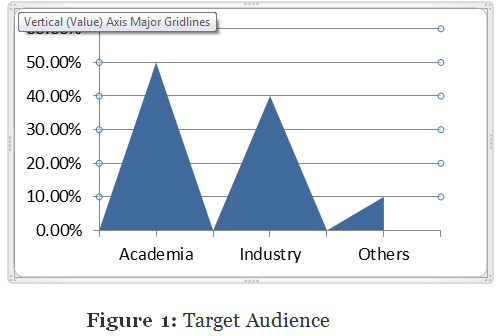
Top Universities in Japan:
- Tohoku University.
- University of Tokyo.
- Kyoto University.
- Osaka University.
- Kyushu University
- Tokyo Institute of Technology
Glance at Market of Nanomaterials Science:
The global market is projected to reach $6,000 million by 2020 and register a CAGR of 10.2% between 2015 and 2020 in terms of value. The growth in market is estimated to be driven by the increasing demand for aero gel materials from oil & gas and construction applications. The North American region remains the largest market, followed by Asia-Pacific. . The Europe market is estimated to be growth at a steady rate due to economic recovery in the region along with the increasing concern for the building insulation and energy savings. The structural core material market in aerospace interior is estimated to grow from USD 142.2 Million in 2016 to USD 220.2 Million by 2021, at a compound annual growth rate (CAGR) of 9.13% between 2016 and 2021. The base year considered for the study is 2015 and the market size is projected between 2016 and 2021. Increase in the demand for Boeing 787 and Airbus 350 is expected to significantly drive the structural core material market in aerospace interiors. The market size of high-temperature composite materials is projected to reach USD 5.01 Billion by 2021, at a CAGR of 8.41% during the forecast period. The introduction of safety norms in public transport as well as increasing demand for lightweight and high-performance composite materials in the aerospace & defence, transportation, and energy & power applications are key factors responsible for the growth of the high-temperature composite materials market. Global Metallurgy market will develop at a modest 5.4% CAGR from 2014 to 2020. This will result in an increase in the market’s valuation from US$6 bn in 2013 to US$8.7 ban by 2020. The global market for powder metallurgy parts and powder shipments was 4.3 billion pounds (valued at $20.7 billion) in 2011 and grew to nearly 4.5 billion pounds ($20.5 billion) in 2012. This market is expected to reach 5.4 billion pounds (a value of nearly $26.5 billion) by 2018
Nanotechnology:
Although much of nanotechnology's potential still remains un-utilized, investment in the field is booming. The U.S. government distributed more than a billion dollars to nanotechnology research in 2005 to find new developments in nanotechnology. China, Japan and the European Union have spent similar amounts. The hopes are the same on all fronts: to push oneself off a surface on a growing global market that the National Science Foundation estimates will be worth a trillion dollars. The global market for activated carbon totalled $1.9 billion, in 2013, driven primarily by Asia-Pacific and North American region for applications in water treatment and air purification.

Figure 3: Growth forecast for nanotechnology
Materials Industry:
The global market for carbon fibre reached $1.8 billion in 2014, and further the market is expected to grow at a five-year CAGR (2015 to 2020) of 11.4%, to reach $3.5 billion in 2020. Carbon fibre reinforced plastic market reached $17.3 billion in 2014, and further the market is expected to grow at a five-year CAGR (2015 to 2020) of 12.3%, to reach $34.2 billion in 2020. The competition in the global carbon fibre and carbon fibre reinforced plastic market is intense within a few large players, such as Toray Toho, Mitsubishi, Hexcel, Formosa, SGL carbon, Cytec, Akas, Hyosung, Subic etc.
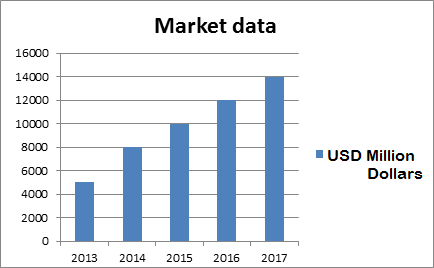
Figure 4: Growth forecast of materials
Materials Chemistry:
Today, many materials chemists are synthesizing functional device materials, and the discipline is often seen as directed towards producing materials with function—electrical, optical, or magnetic. Material chemistry is involved in the designing and processing of materials. Global market for catalysts is expected to reach $28.5 billion by 2020, growing at a CAGR (2015 to 2020) of over 3%. Asia-Pacific is having the largest market for catalysts accounting for more than 35% share.

Figure 5: Growth forecast of material chemistry.
Conference Highlights
- Nanotechnology in materials science
- Application of Nanotechnology
- Advanced Nanomaterials
- Nanoparticles
- Nanomedicine and Bionanotechnology
- Nanophysics
- Nanostructures and Nanofabrications
- Nano Robotics
- Nanotechnology in communications & Information Technology
- Making of Nanomaterials
- Functional Nanomaterials
- Nanotechnology in Polymers
- Mechanical application of Nanotechnology
- Nanotechnology for biological system
- Nanotechnology in energy
- Nanoelectronic devices
- Nanotech products
- Nanomedical devices
- Nanochemistry
- Nanotechnology in Space
To share your views and research, please click here to register for the Conference.
To Collaborate Scientific Professionals around the World
| Conference Date | March 25-26, 2019 | ||
| Sponsors & Exhibitors |
|
||
| Speaker Opportunity Closed | |||
| Poster Opportunity Closed | Click Here to View | ||
Useful Links
Special Issues
All accepted abstracts will be published in respective Our International Journals.
- Journal of Material Sciences & Engineering
- Journal of Nanomaterials & Molecular Nanotechnology
- Journal of Nanosciences: Current Research
Abstracts will be provided with Digital Object Identifier by





